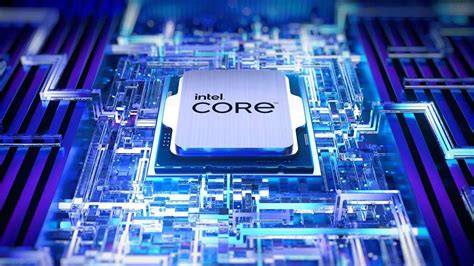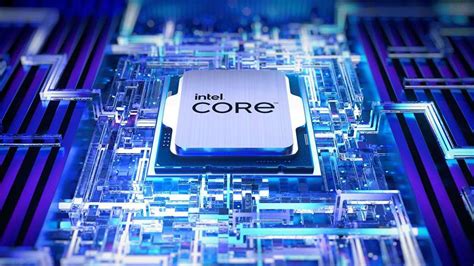How to Tell If Intel Processors Are Counterfeit
How to Spot a Fake Intel Processor
In the realm of computer hardware, Intel processors are renowned for their performance and reliability. However, with the growing demand for these processors, the market has unfortunately been infiltrated by counterfeit products. These counterfeit processors, often disguised as genuine Intel chips, can lead to performance issues, system instability, and even security vulnerabilities. Therefore, it is crucial to be able to distinguish authentic Intel processors from their fake counterparts.
This comprehensive guide will equip you with the knowledge and tools to identify counterfeit Intel processors, ensuring that you invest in genuine and reliable hardware. We will explore various methods, including visual inspection, examining markings and labels, checking online resources, and utilizing software tools.
By understanding the telltale signs of counterfeit processors and implementing the strategies outlined in this guide, you can confidently protect yourself from falling victim to fraudulent products. Let’s delve into the world of Intel processor authenticity and equip ourselves with the knowledge to make informed decisions.

Visual Inspection
A thorough visual inspection is often the first step in identifying counterfeit processors. Here’s what you should look for:
- Packaging: Counterfeit processors are frequently packaged in poorly printed boxes or those that lack the distinctive Intel branding. Genuine boxes typically feature high-quality printing, clear labels, and security seals.
- Labeling: Examine the processor’s label carefully. Counterfeit labels may be blurry, misaligned, or have inconsistent fonts. The processor’s model number, manufacturing date, and other crucial information should be clearly legible and accurate.
- Heat Spreader: The heat spreader, the metal cover on top of the processor, should be smooth and have a consistent finish. Counterfeit heat spreaders might have uneven surfaces, scratches, or rough edges.
Examining Markings and Labels
Beyond the initial visual inspection, you can further scrutinize the processor’s markings and labels for authenticity. Pay close attention to:
- Intel Logo: Genuine Intel processors prominently display the Intel logo, usually engraved on the processor’s surface. Counterfeit processors may have a poorly printed logo or a logo that appears distorted or faded.
- Model Number: The processor’s model number, such as Core i7-12700K, should be clearly visible and accurate. Counterfeit processors may have inaccurate or misspelled model numbers.
- Manufacturing Date: Look for a manufacturing date on the processor’s label. Counterfeit processors often lack a manufacturing date or have a date that is illogical or inconsistent with other markings.
Utilizing Online Resources
The internet offers valuable resources that can help you verify the authenticity of an Intel processor. You can utilize the following:
- Intel’s Website: Intel provides a dedicated page on its website for identifying counterfeit products. You can use the information provided there to verify the authenticity of a processor by entering its model number, serial number, or other identifying information.
- Product Verification Databases: Several third-party websites offer databases that list genuine Intel processors and their unique identifiers. These databases can be helpful in cross-checking the information on a processor against its authentic counterpart.
Software Tools for Verification
While visual inspection and online resources are useful, software tools can provide a more in-depth analysis of a processor’s authenticity. Here are some options:
- BIOS Check: Some motherboards have built-in functions that can detect counterfeit processors. During the BIOS setup, you can often run a processor verification test that can flag a potentially counterfeit chip.
- Third-Party Software: Several third-party software programs are specifically designed to identify counterfeit processors. These programs analyze various aspects of the processor, including its hardware specifications, performance metrics, and operating system compatibility, to determine its authenticity.
Can I Check If My CPU Is Genuine With CPU-Z?
CPU-Z is a popular utility that provides detailed information about your computer’s hardware components, including the CPU. While CPU-Z can offer valuable insights, it’s important to understand that it’s not a foolproof method for identifying counterfeit processors.
Here’s why CPU-Z might not be completely reliable:
- Counterfeit Processors Can Mimic Genuine Specs: Counterfeit processors are often designed to mimic the specifications of their genuine counterparts. This means that CPU-Z might display information that appears to be correct, even though the processor is fake.
- CPU-Z Doesn’t Verify Authenticity: CPU-Z is a diagnostic tool that displays hardware information. It doesn’t have a built-in mechanism for verifying processor authenticity. It primarily reports the information provided by the processor itself.
However, CPU-Z can still be helpful in the identification process. If the information displayed by CPU-Z seems inconsistent with the processor’s actual model number or other markings, it could raise a red flag. For instance, if CPU-Z reports a Core i9-12900K but the processor’s label clearly states a different model number, it could indicate a counterfeit chip.
While CPU-Z isn’t a guaranteed solution for detecting counterfeit processors, it can provide additional clues and help you identify potential inconsistencies that require further investigation.
How Do You Check If a CPU Is Genuine?
Several methods can be employed to determine the genuineness of a CPU. A comprehensive approach involves a combination of visual inspection, label verification, online resources, and software tools. Let’s delve into each method in detail:
1. Visual Inspection:
- Examine the Packaging: Authentic Intel processors are typically packaged in high-quality boxes with clear labels and Intel branding. Counterfeit packages may have poor printing quality, mismatched labels, or missing security seals.
- Scrutinize the Label: The processor label should display clear and accurate information, including the model number, manufacturing date, and other relevant details. Counterfeit labels might have blurred text, misaligned fonts, or inconsistencies.
- Inspect the Heat Spreader: The heat spreader, the metal cover on top of the processor, should be smooth, free of scratches, and have a consistent finish. Counterfeit heat spreaders may have uneven surfaces or rough edges.
2. Label Verification:
- Intel Logo: Authentic processors prominently display the Intel logo, usually engraved on the processor’s surface. Counterfeit processors may have a poorly printed or distorted logo.
- Model Number: Verify the processor’s model number against the manufacturer’s official website or a reputable online resource. Counterfeit processors may have inaccurate or misspelled model numbers.
- Manufacturing Date: Look for a consistent manufacturing date on the label and compare it with other markings. Counterfeit processors might lack a manufacturing date or have an illogical date.
3. Online Resources:
- Intel’s Website: Intel provides a counterfeit product identification page on its website. You can verify the authenticity of a processor by entering its model number, serial number, or other information.
- Third-Party Databases: Several websites offer databases that list genuine Intel processors and their identifiers. Compare the information on the processor against the authentic data in these databases.
4. Software Tools:
- BIOS Check: Some motherboards have built-in functions to detect counterfeit processors. During the BIOS setup, you can run a processor verification test. If the processor is flagged as counterfeit, it should raise concerns.
- Third-Party Software: Various software programs specifically designed to identify counterfeit processors are available. These programs analyze hardware specifications, performance metrics, and operating system compatibility for authenticity verification.
By implementing these methods, you can significantly reduce the risk of purchasing counterfeit Intel processors. It’s crucial to exercise caution when acquiring CPU components and to rely on trusted sources.
Why Are Some Intel Processors Counterfeit?
The counterfeit market for Intel processors thrives due to the high demand and profitability associated with these components. Counterfeiters seek to capitalize on the reputation and performance of genuine Intel processors by producing imitation products that can be sold at lower prices, often targeting budget-conscious consumers.
Here are some key reasons why counterfeit Intel processors are prevalent:
- Profitability: The high demand for Intel processors creates a lucrative market for counterfeiters. They can sell fake processors at significantly lower prices, generating substantial profits.
- Complexity of Production: Counterfeiters are becoming increasingly skilled in replicating the complex manufacturing processes involved in producing processors. They use advanced equipment and techniques to create convincing imitations.
- Demand for Lower-Cost Options: Some consumers are drawn to lower-priced options, making them susceptible to counterfeit processors. They might not realize the potential risks and long-term costs associated with using fake components.
- Lack of Awareness: Not everyone is aware of the dangers of counterfeit processors. This lack of awareness can make it easier for counterfeiters to operate and sell their products without detection.
- Supply Chain Vulnerabilities: Counterfeit processors can enter the supply chain at various points, making it challenging to track their origins and prevent their distribution.
The prevalence of counterfeit Intel processors highlights the importance of being informed and taking precautions to avoid purchasing fraudulent products. By understanding the factors contributing to the counterfeit market, we can better equip ourselves to make informed decisions and protect ourselves from the risks associated with using fake components.
What Are the Dangers of Using a Counterfeit Intel Processor?
Using a counterfeit Intel processor can have serious consequences, jeopardizing your system’s performance, stability, and even security. Here are some of the dangers associated with counterfeit CPUs:
1. Performance Degradation:
- Lower Clock Speeds and Performance: Counterfeit processors often have lower clock speeds and processing power compared to genuine chips. This results in slower performance, impacting system responsiveness and application execution.
- Memory and Storage Bottlenecks: Counterfeit CPUs might not support the full capabilities of your system’s RAM and storage devices, leading to performance bottlenecks and data transfer issues.
- Unstable Operation: Fake processors can cause system instability, leading to crashes, freezes, and unexpected errors. This can result in data loss, program malfunctions, and frustrating user experiences.
2. Security Vulnerabilities:
- Malware and Security Risks: Counterfeit processors can be infected with malware or other security threats, compromising your system’s security and potentially leading to data breaches or identity theft.
- Hardware Backdoors: Counterfeiters might intentionally introduce backdoors or vulnerabilities into their processors, enabling them to access your system remotely or steal sensitive information.
- System Compromise: Using a fake processor can create vulnerabilities that make your system more susceptible to attacks, compromising your privacy and data integrity.
3. Warranty Issues:
- Invalid Warranty: Counterfeit processors are not covered by Intel’s warranty. If you encounter problems with a counterfeit processor, you’ll likely be left without support or replacement options.
- Damage to Other Components: A counterfeit CPU might damage other system components, such as the motherboard or RAM, further increasing repair costs and system instability.
4. Legal and Ethical Implications:
- Legal Consequences: Buying and using counterfeit products is often illegal and can result in fines or other legal penalties. It’s crucial to be aware of the legal implications of dealing with counterfeit goods.
- Ethical Considerations: Supporting counterfeiters contributes to a market that undermines legitimate businesses and innovation. Choosing genuine products promotes fair trade and ethical practices.
The risks associated with counterfeit Intel processors are significant. To safeguard your system, your data, and your financial security, it’s vital to prioritize purchasing genuine components from trusted sources.
Where to Buy Genuine Intel Processors
To ensure you obtain authentic Intel processors, it’s essential to purchase them from reputable retailers and authorized distributors. Here are some reliable sources for genuine Intel CPUs:
- Intel’s Website: Intel’s official website lists authorized retailers and distributors where you can purchase genuine processors.
- Major Online Retailers: Established online retailers such as Amazon, Newegg, and Best Buy typically carry genuine Intel processors. Look for retailers with a good reputation and customer reviews.
- Local Computer Stores: Reputable local computer stores often stock genuine Intel CPUs and can provide expert advice on choosing the right processor for your needs.
- System Builders: If you’re building a custom PC, consider working with a reputable system builder that sources genuine Intel processors from reliable distributors.
When purchasing Intel processors, always inspect the packaging carefully for any signs of tampering or counterfeiting. Check the labels for accuracy and consistency. If you have any doubts, contact the retailer or distributor to verify the authenticity of the product.
By choosing trusted sources and exercising caution, you can minimize the risk of acquiring counterfeit Intel processors and ensure that you invest in reliable and genuine hardware.
What to Do If You Think You Have a Counterfeit CPU
If you suspect you may have purchased a counterfeit Intel processor, it’s essential to take immediate action to mitigate potential risks and protect your system.
Here’s what you should do:
- Stop Using the Processor: Immediately remove the suspected counterfeit CPU from your system to prevent further damage or security vulnerabilities.
- Contact the Retailer: If you purchased the processor from a retailer, contact them immediately to report the suspected counterfeit. They may be able to assist in verifying the authenticity of the product or offer a replacement.
- Contact Intel: You can also reach out to Intel directly to report a suspected counterfeit. Intel has a dedicated team for handling counterfeit product reports. They can provide guidance on how to proceed and may offer additional verification services.
- Perform a System Scan: Thoroughly scan your system for malware or other security threats to ensure that it hasn’t been compromised by the counterfeit processor. Use reputable antivirus and anti-malware software.
- Replace the Processor: If you confirm that the processor is counterfeit, replace it with a genuine Intel CPU from a trusted source.
It’s crucial to take swift action if you suspect a counterfeit processor. By following these steps, you can minimize the risks associated with using a fake chip and protect your system from potential damage or security breaches.
How to Protect Yourself From Counterfeit CPUs
Protecting yourself from counterfeit Intel processors requires a proactive approach that involves awareness, verification, and responsible purchasing habits. Here are some key strategies:
1. Research and Awareness:
- Stay Informed: Educate yourself about the signs of counterfeit processors and the risks associated with using fake components.
- Understand the Market: Familiarize yourself with the legitimate pricing and availability of Intel processors to identify potential anomalies or excessively low prices.
2. Verification and Due Diligence:
- Inspect Packaging and Labels: Carefully examine the packaging and labels for quality, accuracy, and consistency with genuine Intel products.
- Utilize Online Resources: Verify the authenticity of a processor using Intel’s counterfeit product identification page or third-party databases.
3. Responsible Purchasing:
- Trusted Sources: Purchase Intel processors only from reputable retailers, authorized distributors, or well-established online marketplaces.
- Check Reviews and Ratings: Read customer reviews and ratings for the retailer or seller to gauge their trustworthiness.
- Avoid Suspicious Offers: Be wary of excessively low prices or sellers offering “deals” that seem too good to be true.
4. Ongoing Monitoring:
- Performance Monitoring: Keep an eye on your system’s performance for any signs of degradation or instability that could indicate a counterfeit processor.
- Security Updates: Ensure your system is up to date with the latest security patches to mitigate potential vulnerabilities from counterfeit chips.
By practicing these preventive measures, you can significantly reduce the risk of purchasing counterfeit Intel processors and maintain the integrity of your computer system.
Table: Summary of Counterfeit Intel Processor Identification Methods
| Method | Steps | Indicators of Counterfeit |
|---|---|---|
| Visual Inspection |
|
|
| Label Verification |
|
|
| Online Resources |
|
|
| Software Tools |
|
|
FAQ:
What is a Counterfeit CPU?
A counterfeit CPU is a fake version of a genuine processor, often designed to mimic the appearance and specifications of the real thing. These processors are typically manufactured by unauthorized individuals or companies and are intended to deceive buyers into believing they are purchasing authentic hardware.
How can I tell if a CPU is genuine?
You can determine the authenticity of a CPU through a combination of methods, including:
- Visual Inspection: Examining the packaging, label, and heat spreader for consistency and quality.
- Label Verification: Checking the Intel logo, model number, and manufacturing date for accuracy.
- Online Resources: Utilizing Intel’s counterfeit product identification page or third-party databases.
- Software Tools: Running BIOS verification tests or using third-party software designed for counterfeit detection.
What are the signs of a counterfeit CPU?
Counterfeit CPUs often exhibit telltale signs, including:
- Poorly printed or mismatched packaging.
- Blurry or inconsistent labeling.
- Distorted or faded Intel logo.
- Inaccurate or misspelled model number.
- Missing or illogical manufacturing date.
- Uneven or rough heat spreader surface.
- Processor failing authentication tests or software detecting inconsistencies.
What are the risks of using a counterfeit CPU?
Using a counterfeit CPU can lead to:
- Performance degradation, including lower clock speeds and processing power.
- System instability and crashes.
- Security vulnerabilities and malware infections.
- Invalid warranty and potential damage to other components.
- Legal and ethical implications.
Where can I buy genuine Intel processors?
To ensure you purchase genuine Intel processors, it’s recommended to buy from:
- Intel’s official website.
- Major online retailers like Amazon, Newegg, and Best Buy.
- Reputable local computer stores.
- Trusted system builders.
What should I do if I think I have a counterfeit CPU?
If you suspect you have a counterfeit CPU, you should:
- Stop using the processor immediately.
- Contact the retailer or Intel to report the suspicion.
- Scan your system for malware.
- Replace the processor with a genuine one.
How can I protect myself from counterfeit CPUs?
To protect yourself from counterfeit CPUs, you should:
- Stay informed about the risks and signs of counterfeit products.
- Verify the authenticity of processors using multiple methods.
- Purchase from trusted sources and be wary of suspicious offers.
- Monitor your system’s performance and security.



